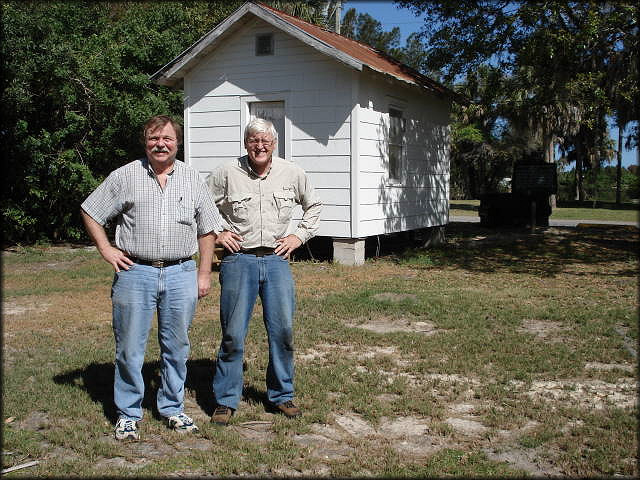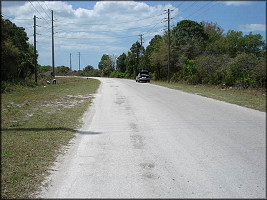|
Daedalochila uvulifera (Shuttleworth, 1852) Peninsula Liptooth In Pasco-Hernando, Counties |
|
| [+ Daedalochila uvulifera striata (Pilsbry, 1940)] | |
|
Pictured below (left to right) are Kurt Auffenberg and Harry Lee at the old Aripeka post office |
|
|
|
|
|
On March 24, 2007
Kurt Auffenberg, Ed Cavin, and Harry Lee searched Aripeka, at the
Pasco-Hernando Co. line, for examples of a subspecies described as
Polygyra uvulifera striata Pilsbry, 1940. The type material
(including the holotype, ANSP 77543) was sent to the Academy of
Natural Sciences, Philadelphia probably between 1895 and 1900 by its
collector, George Pine, a New Jersey native then in his 60's. Pine
was appointed the first postmaster of Aripeka in Feb., 1895. Dr.
Pilsbry (1900: 108) remarked: "Mr. Pine sent numerous specimens of
uvulifera from Hernando Co. which differ from the Long Key
types [type locality of Shuttleworth's Helix uvulifera [see
Daedalochila
uvulifera (Shuttleworth, 1852) Peninsula Liptooth] in
being strongly striate and smaller.... I do not know whether these
occur with the variety [P. u. bicornuta ssp. nov. (p. 107)]
or at separate stations." It appears that forty years later Pilsbry
decided to name these smaller, striate specimens. Epilogue: After considerable study of dozens of lots assigned to D. uvulifera (Shuttleworth, 1852) sensu stricto, Dr. Lee concluded that there was no taxonomically significant difference among the shells of these topotypes, the type suite of D. u. striata at the Academy of Natural Sciences, Philadelphia, and the many nominotypical D. uvulifera. D. uvulifera striata is therefore considered a synonym of D. uvulifera. |
|
|
|
|
|
Daedalochila uvulifera striata (Pilsbry, 1940) Topotypes |
|
|
Aripeka historical marker |
Old Dixie Highway where the snails were found |



